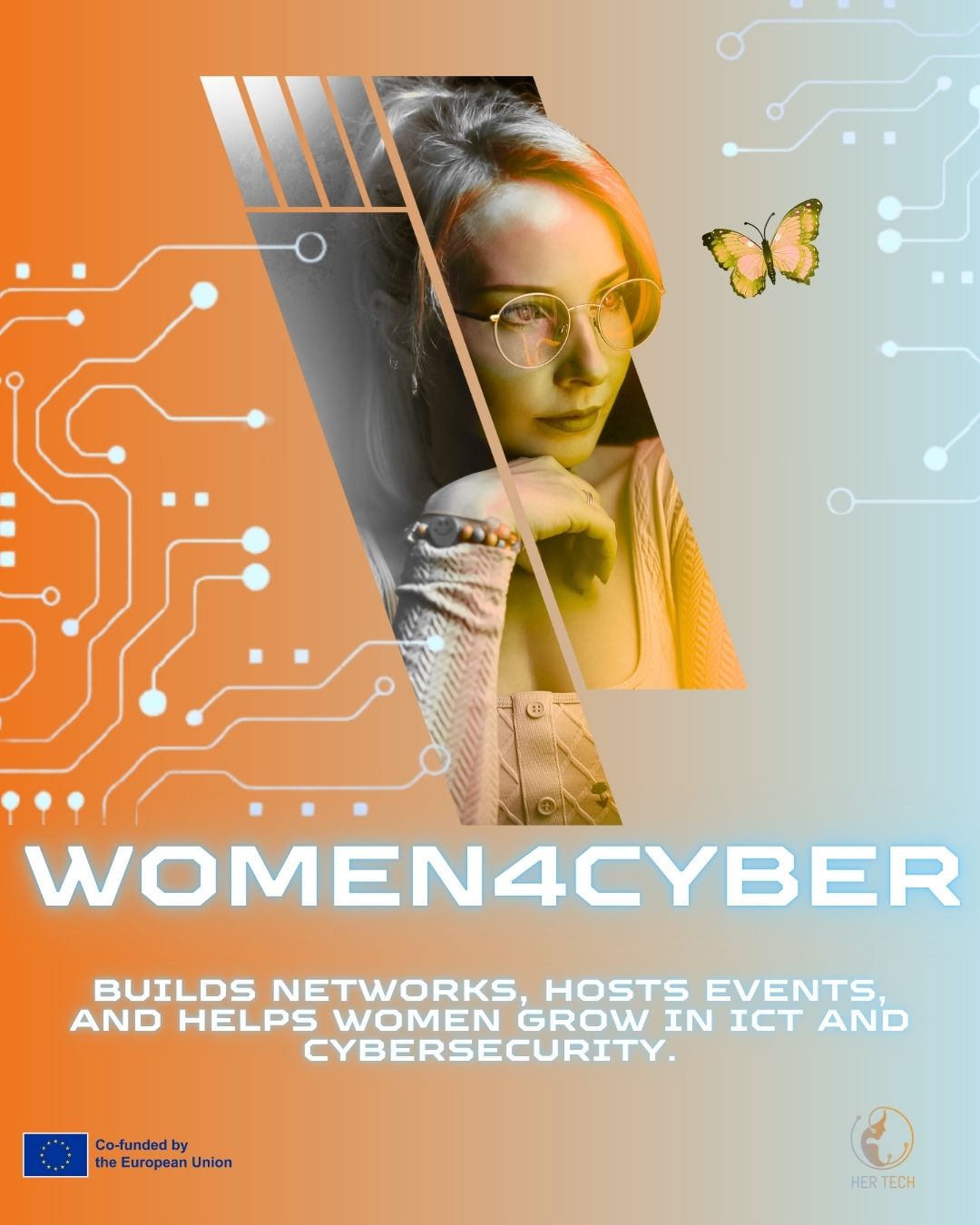In an era where digital transformation is opening up new career pathways and shaping our societies, it is vital to ensure that women are neither left behind nor under-represented in the fields of ICT and cybersecurity. The HER TECH project is committed to proposing policies and practices that widen the pipeline for women into the ICT sector — and one powerful example of such work is the Women4Cyber initiative.
What is Women4Cyber?
Women4Cyber is a non-profit European foundation whose mission is to “promote, encourage and support the participation of women in the field of cybersecurity.” (women4cyber.eu) It originated from the European Cyber Security Organisation (ECSO) in 2019, which identified the urgent need to address a gender-gap in this domain. The foundation has established national chapters across Europe (currently 30+). (women4cyber.se)
Its strategic roadmap outlines three core objectives:
- Mobilising and linking the community (networks, partnerships, policy-influence);
- Facilitating access to education, training and jobs for women (entry, retention, up-skilling);
- Bringing visibility and awareness—through role models, communications, best-practices.
By supporting women and non-binary individuals in cybersecurity, Women4Cyber helps fill both the skills shortage (for example Europe has hundreds of thousands of unfilled cybersecurity posts) and the representation gap.
Women4Cyber in Sweden
In Sweden, Women4Cyber has a national chapter: Women4Cyber Sweden. Their vision is to close the gender gap in cyber security, and they state their mission as increasing women’s presence in cybersecurity education and the job market, giving voice to women and non-binary people, and providing a welcoming community.
This chapter hosts events, meet-ups (including for those not yet in cybersecurity) and offers an opportunity for networking, role-modelling and skill development.
For the Her Tech project’s interest in new policies and pathways into ICT for women, this Sweden example offers concrete inspiration: local community building, national-level alignment, and international connectivity via the global foundation.


